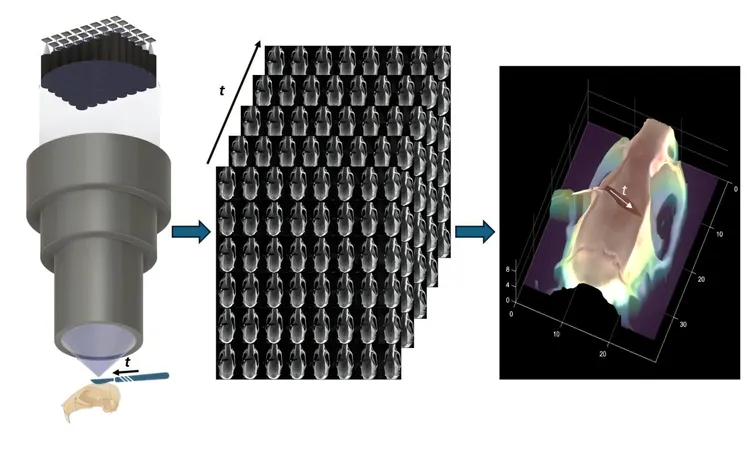
Revolutionary AI-Crafted Proteins: How Scientists Just Gave Nature's Movements a High-Tech Upgrade!
2025-05-27
Author: John Tan
In a groundbreaking study from the University of California, San Francisco (UCSF), researchers have harnessed the power of deep learning to create artificial proteins that move and reshape themselves just like their natural counterparts. The fascinating details are featured in a new publication in *Science* titled "Deep learning-guided design of dynamic proteins."
Since the 1980s, scientists have been busy engineering static proteins for a variety of uses, from cleaning products to life-saving medications like insulin and cancer treatments. However, these immovable proteins can't compete with the dynamic capabilities of proteins that can swivel, twist, and morph. "Natural proteins perform complex movements that enable them to function effectively, which static proteins simply can’t achieve," says Tanja Kortemme, a leading bioengineering professor at UCSF.
Designing artificial proteins that mirror this kind of movement has long been a formidable challenge, demanding advanced computational power and deep learning techniques that have only recently become available. In their quest, Kortemme and her team set out to develop a design method applicable across various scenarios, focusing on creating a part of the protein that could mimic the motion of natural proteins.
Crafting the Perfect Moveable Protein:
Amy Guo, a talented graduate student and first author of the study, generated an extensive virtual library with thousands of potential protein shapes. She meticulously selected two stable configurations—one capable of binding calcium and one that could not. By examining atomic interactions within the virtual protein, Guo utilized AlphaFold2 to orchestrate a sequence where the movable segment of the protein twists to capture calcium and then untwists to release it.
From Computer Screens to Real-Life Applications:
The research team put their model through rigorous testing, employing computer simulations and nuclear magnetic resonance to visualize atomic interactions. Guo expressed her amazement, stating, "I was shocked to see that the simulations worked just the way we envisioned, reinforcing my belief in its real-world applicability."
Transforming Futures with Dynamic Proteins:
These findings not only confirm that new types of motion can be engineered but also set the stage for designing proteins that can respond to biological signals. Imagine engineered proteins that adapt their shape in response to disease markers, sending alerts to the body, or medicinal proteins tailored for individual biochemistry. The promise extends to creating proteins that could break down plastics or help plants withstand environmental stresses like drought.
As Guo eloquently puts it, "The possibilities are truly endless," indicating a future where artificial proteins could revolutionize medicine, environmental science, and so much more.


 Brasil (PT)
Brasil (PT)
 Canada (EN)
Canada (EN)
 Chile (ES)
Chile (ES)
 Česko (CS)
Česko (CS)
 대한민국 (KO)
대한민국 (KO)
 España (ES)
España (ES)
 France (FR)
France (FR)
 Hong Kong (EN)
Hong Kong (EN)
 Italia (IT)
Italia (IT)
 日本 (JA)
日本 (JA)
 Magyarország (HU)
Magyarország (HU)
 Norge (NO)
Norge (NO)
 Polska (PL)
Polska (PL)
 Schweiz (DE)
Schweiz (DE)
 Singapore (EN)
Singapore (EN)
 Sverige (SV)
Sverige (SV)
 Suomi (FI)
Suomi (FI)
 Türkiye (TR)
Türkiye (TR)
 الإمارات العربية المتحدة (AR)
الإمارات العربية المتحدة (AR)